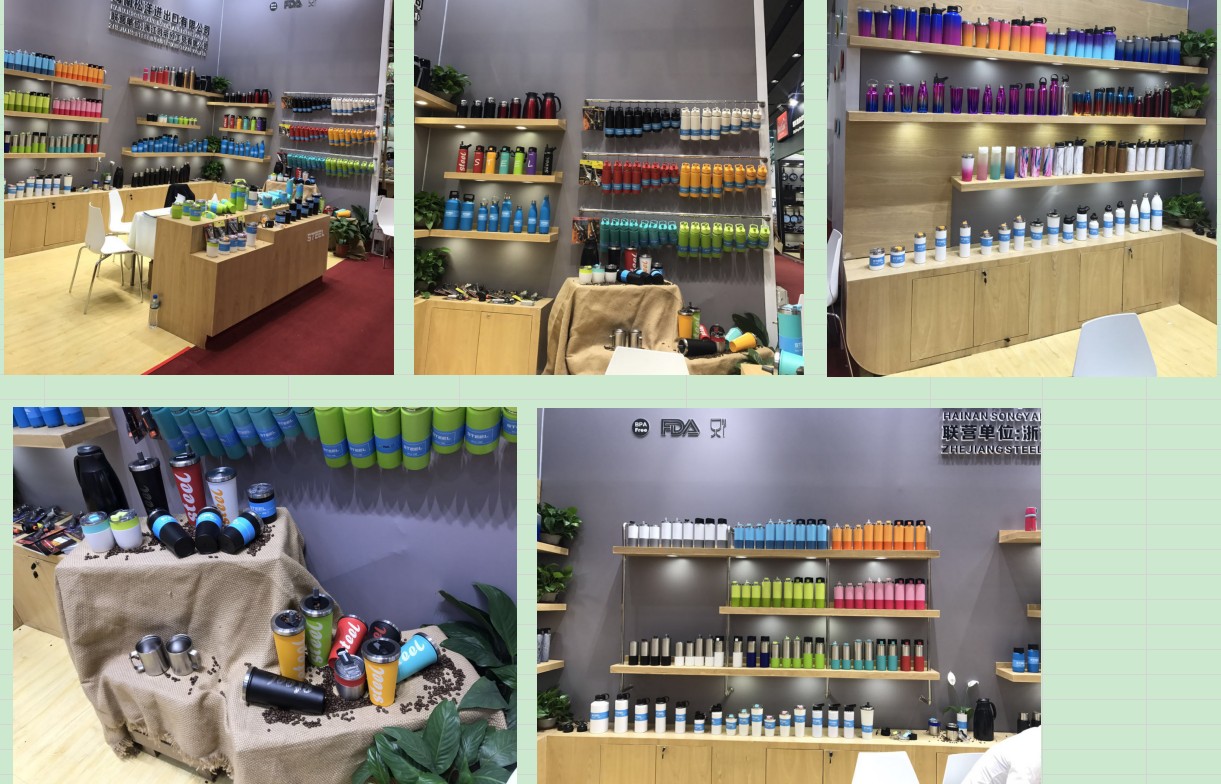
“Our stainless steel water bottles keep hot liquids hot and cold liquids cold” This is the very saying you can hear from water bottle suppliers and manufacturers, since the invention of the insulated bottles. But how? The answer is: foam or vacuum packing skills. However, there is more tostainless steel water bottlesthan to meet the eye. One heavy-duty bottle is a bottle within a bottle. What’s the deal? There is foam or a vacuum between the two containers. Containers filled with foam keep cold liquids cold while vacuum-packed bottles maintain hot liquids hot. Since the early 1900s, this method has been using and shown highly efficient, thereby becoming popular among people who would like to drink on the go. Travelers, athletes, hikers, outdoor activity lovers, or even busy people who enjoy hot water or cold water prefer to have one and even some baby bottles are also made insulated.
History
Egyptians have made the first known bottles, which were in glass produced 1500 B.C. The way to make bottles was to put molten glass around the core of clay and sand until the glass got cooled and then dug out the core. As such, it was quite time consuming and thereby considered a luxury stuff back then. The process has been simplified later in China and Persia with a method that molten glass was blown into a mold. This was then adopted by Romans and spread all over Europe during the middle ages.
The automation helped quicken bottle making in 1865 by using pressing and blowing machines. However, the first automatic machine for bottle making appeared in 1903 when Michael J. Owens put the machine into commercial use for producing and manufacturing bottles. This no doubt revolutionized the bottle making industry by changing it into low costed and large scale production, which also promote the development of the carbonated beverage industry. By 1920, Owens machines or other variants produced most glass bottles. It was until early the 1940s, plastic bottles were produced through blow-molding machines which heated tiny pellets of plastic resin and then forcefully put into a mold of a product. Then remove the mold after it cools. Made from polyethylene, the first plastic bottles devised by Nat Wyeth, durable and sturdy enough to contain carbonated beverages.
Designed in 1896 by English scientist Sir James Dewar, the first insulated bottle was invented and lasted even in today with his name. He sealed one bottle inside another and then pumped out the air inside which made his insulated bottle. Such vacuum in between is a great insulator, which also generated the nowadays’ saying “keep hot liquids hot, cold liquids cold.” However, it was never patented until German glassblower Reinhold Burger and Albert Aschenbrenner who previously worked for Dewar founded a company to manufacture the insulated bottle named Thermos, which was “threm” in Greek, meaning hot.
Now it has been beautified and put large scale production with robots. Purchasers can customize the bottles they want, colors, size, patterns and logos even, direct from the factory. People from Asia may prefer hot water as this is conceived as a healthful habit while westerners enjoy cold drinks which makes the stainless steel insulated water bottle a perfect option for both people.
Raw Materials
Plastic or stainless steel is used as the raw material in the manufacture of insulated bottles. They are also materials for both outer and inner cups. These in the assembly line process, are compatible and well fitted. Foam is often used in the production of insulated bottles for cold drinks.

The Manufacturing Process
The foam
1. The foam is usually in the form of chemical balls when delivered into the factory and these balls can then react to generate heat.
2. heat the liquid mixture slowly to 75-80° F
3. Wait till the mixture cools gradually and then a liquid foam is basically down.
The bottle
4. The outer cup has been formed. If it’s made of plastic, then it’s been through a process called blow molding. As such, pellets of plastic resin would be heated and then blown into a mold of a certain shape. It’s the same case for the stainless steel cup.
5. In the process of an assembly line, the inner and outer liners are well-fitted. A glass or stainless steel filter, is placed inside and then add the insulation, either foam or vacuum.
6. Matchmaking. A single unit is formed by silicone seal coating sprayed on the cups.
7. Beautify the bottles. Then stainless steel water bottles would be painted. In Everich, we have the factory for bottle manufacturing and automated spray coating line which assures the quality and efficiency of large scale production.
The Top
8. The stainless steel water bottle tops are also made blow molded. However, the technique of tops is crucial for the quality of the entire bottles. This is because tops decide if the body can fit perfectly in.
STEELuses various sophisticated manufacturing skills from automatic spray line to manual design of bottles. We are also partnered with Starbucks, with the guarantee of FDA and FGB, looking forward to partnering with you. Contact us here.



